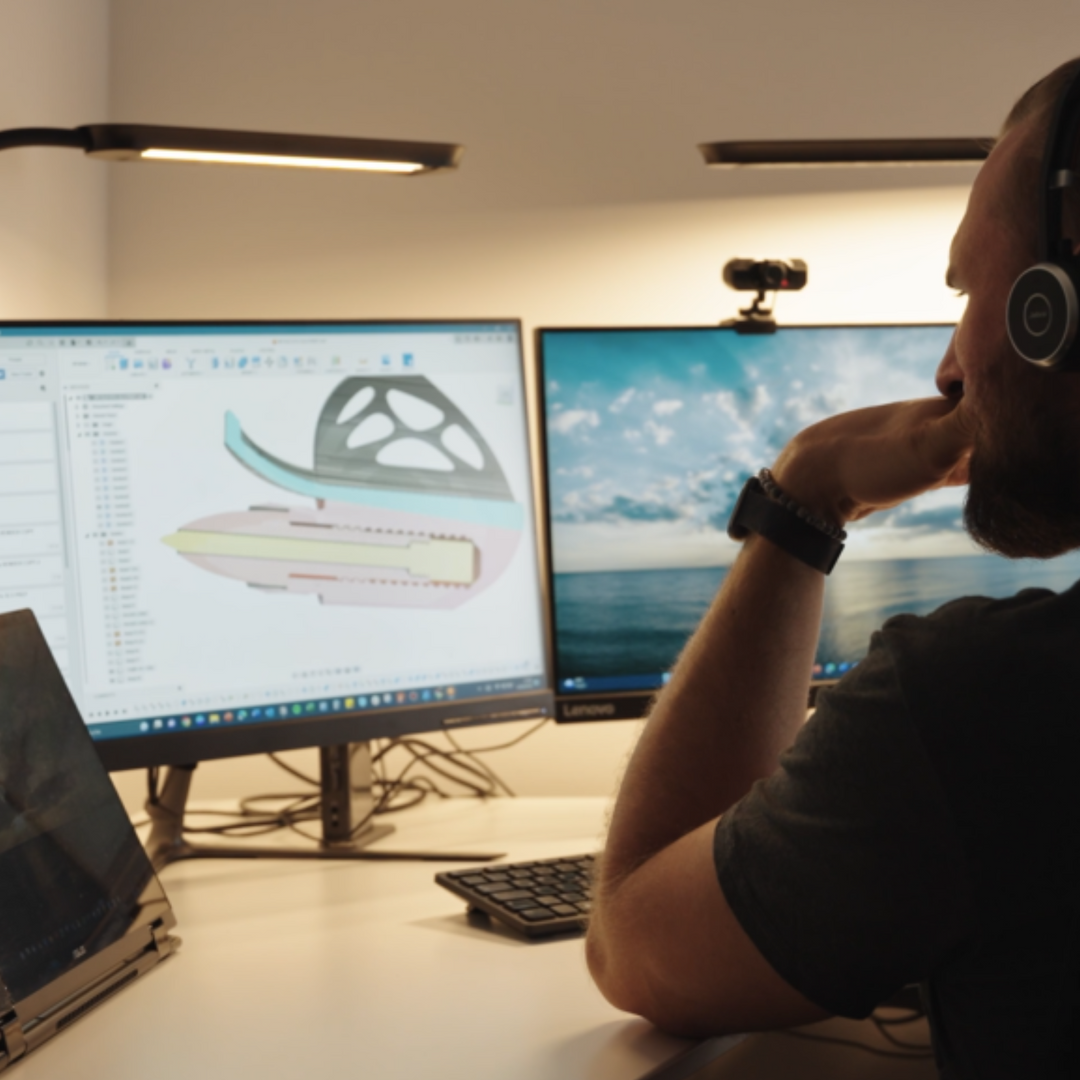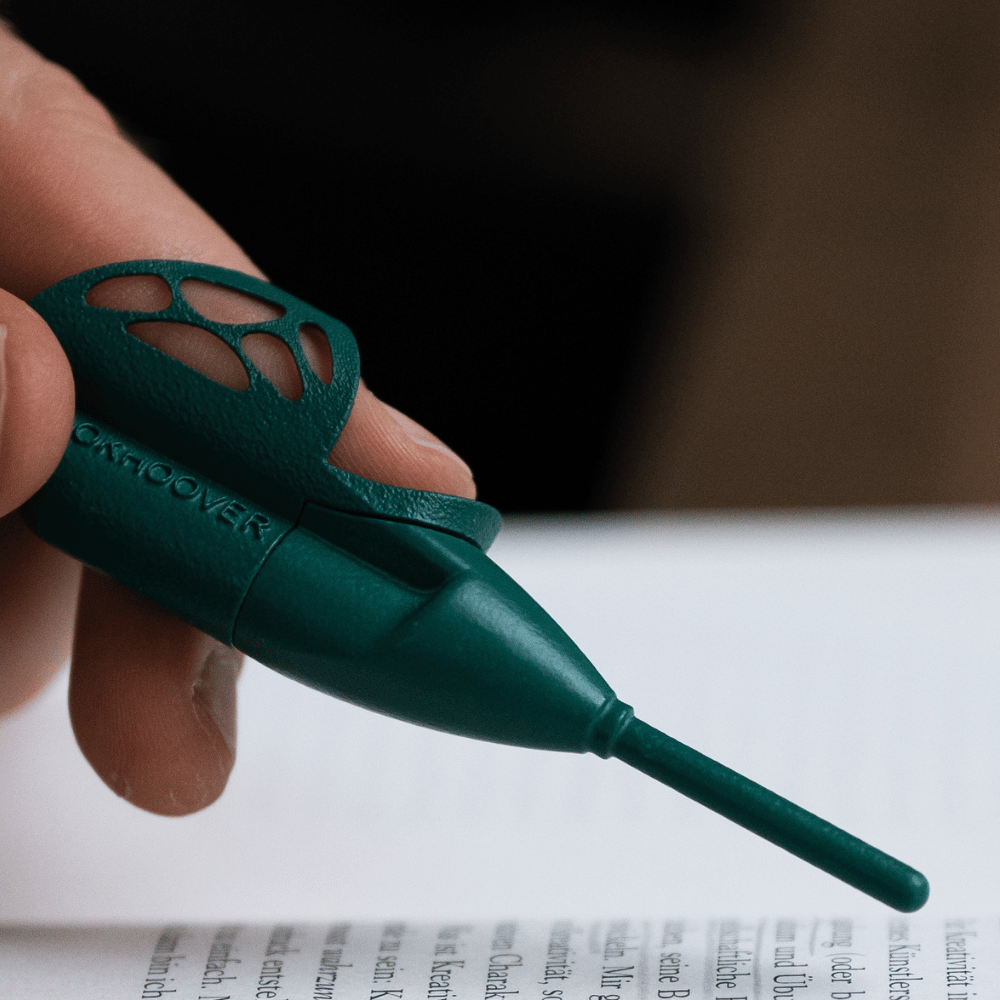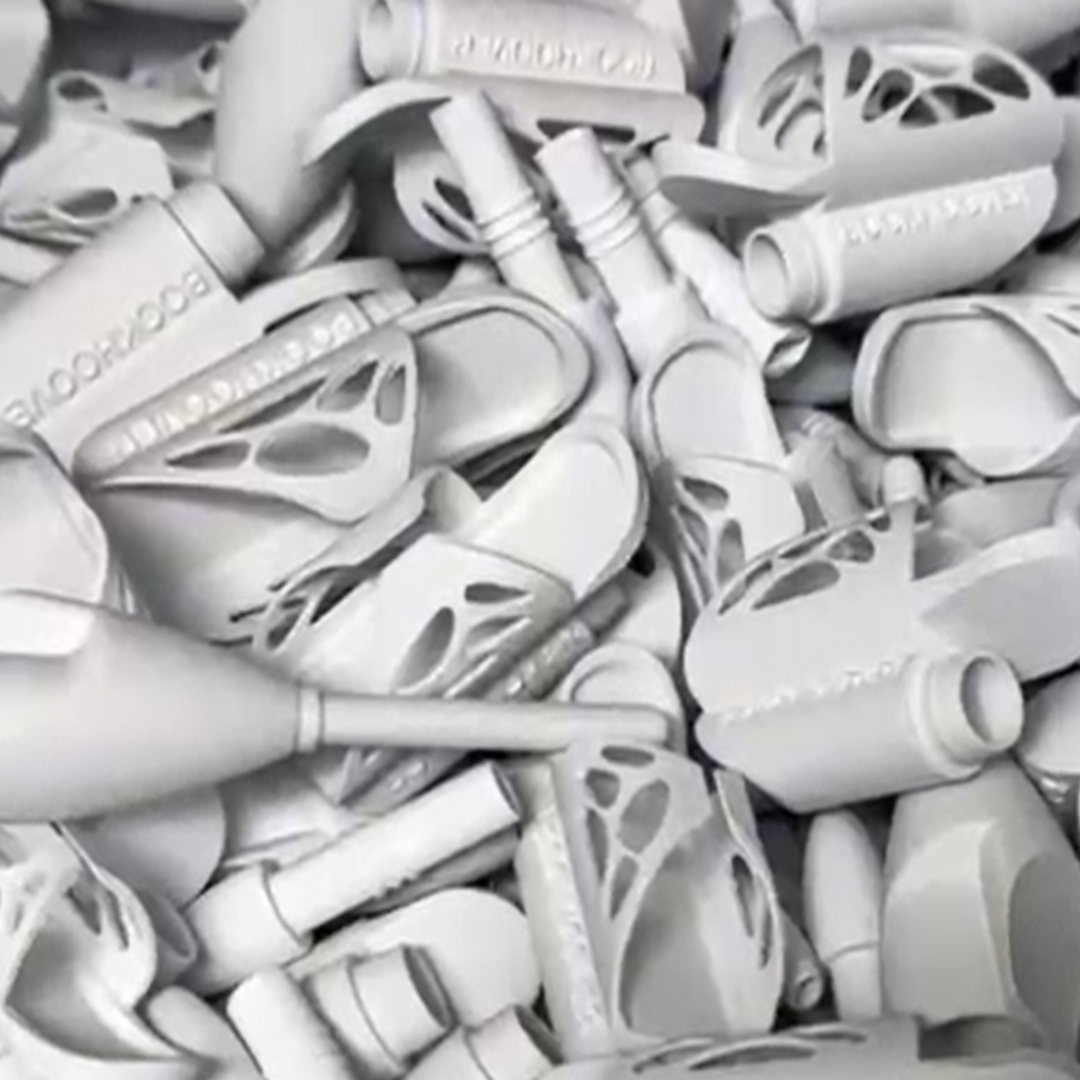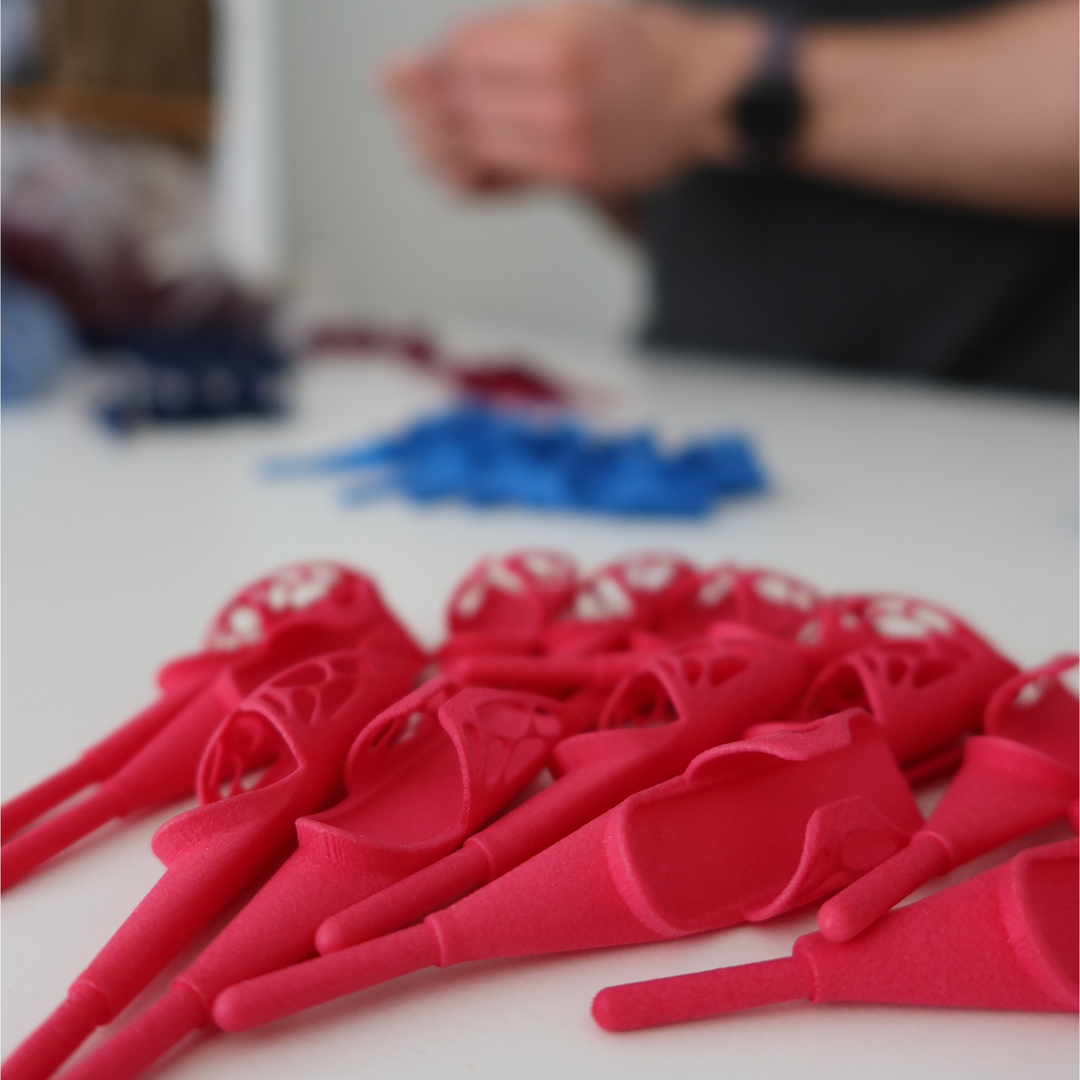Warum 3D-Druck?
Die ersten Prototypen des Bookhoovers hat Gründer Daniel mit seinem eigenen 3D-Drucker hergestellt. Diese Technik macht erste Ideen schnell anfassbar und bietet einen großen Spielraum für Kreativität und Flexibilität.
Mittlerweile werden unsere Produkte in einer Produktionsstätte in Sachsen im professionellen Druckverfahren hergestellt.
3D-Modell
Die Reise des Bookhoovers beginnt mit einer händischen Zeichnung, die anschließend in eine 3D-Skizze umgewandelt wird.
Als Druckdaten ausgeschrieben werden sie an unsere Produktionsstätte gesendet und dort gedruckt.


Inspiration Natur
Modernste additive Fertigungstechniken machen es möglich, die filigrane Struktur des Bookhoovers abzubilden. Das bionische Design der Fingerhalterung ist an die Flügel eines Insektes angelehnt.
Daran werden wenige Brückenelemente integriert, die für eine ausreichende Belüftung sorgen, elastisch genug für den Finger sind und gleichzeitig Stabilität und Halt bieten.
Wie funktioniert unser 3D-Druck?
Unser Rohstoff ist PA12. Das pulverförmige Polyamid wird mittels Multijet-Fusion-Verfahren (MJF) additiv, also Schicht für Schicht, aufgebaut. Nur das Material, das auch wirklich benötigt wird, wird verwendet.
So sparen wir bei der Herstellung neben dem Material auch Energie. Unser Werkstoff, der auch bei Prothesen zum Einsatz kommt, ist formstabil, langlebig, biokompatibel und hautverträglich.
Multi-Jet-Fusion
Über einen Druckkopf wird eine wärmeleitende Flüssigkeit auf eine Schicht des Materialpulvers gespritzt. Mittels Infrarotlicht werden die Bereiche mit „Fusing Agent“-Auftrag stärker erhitzt als das Pulver ohne diese Flüssigkeit.
Auf diese Weise verschmelzen die Bereiche für das zu druckende Bauteil miteinander. Bei diesem Verfahren entfallen im Gegensatz zu anderen 3D-Druck-Verfahren Stützkonstruktionen – sie würden neben Zeit und Kosten auch wertvolle Materialien verschwenden.


Entpulvern
Die Bauteile werden herausgelöst und grob gesäubert.
Im zweiten Schritt wird die Oberfläche der Bauchteile mittels Glasperlenstrahlen bearbeitet, um jegliche Pulverrückstände zu entfernen.
Dampfglättung
Anschließend erfolgt die Dampfglättung, um die Oberfläche zu versiegeln – die Bauteile sind somit wasser- und luftdicht. Langlebigkeit ist gewährleistet.
Dieser Prozess sorgt dafür, dass die zunächst körnige Oberfläche des Bookhovers geglättet wird und er dennoch seine einzigartige “3D-Druck-Struktur” beibehält. Dieser essenzielle Schritt verbessert auch die mechanischen Eigenschaften und die Funktionalität des Bauteils.

Die finalen Schritte
Wir wählen die Produktfarben sehr sorgfältig aus, bevor wir sie in unser Sortiment aufnehmen. Die schöne, matte Optik unserer Farben passt perfekt zu unseren Designs und ergibt zusammen eine wunderbare Haptik.


Diffusionsbad
Der Färbeprozess erfolgt mit der DeepDye Coloring (DDC) Technologie. Dies ist ein “Färbebad” mit genau kontrolliertem Druck und Temperatur.
So gelangt die Farbe mittels Diffusion tief in die gedruckten, weißen Körper des Bookhovers. Die Farbstoffmoleküle verteilen sich gleichmäßig im Material, was zu einer intensiven und einheitlichen Färbung führt.
Handarbeit
Zum Schluss werden die gedruckten, farbigen Einzelteile nach Köln in die Bookhoover-Zentrale geschickt.
Hier bauen wir alle Produkte von Hand zusammen und versehen sie mit den verschiedenen Stifteinheiten. Wir verpacken sie liebevoll und versenden den Bookhover anschließend klimaneutral per DHL GoGreen oder Warenpost.



Made in Germany
Mit der innovativen 3D-Drucktechnik können wir unser minimalistisches Design ressourcenschonend und genau nach unseren Vorstellungen herstellen.
Unser Druckpartner ist Mitglied der Unternehmen der Umwelt- und Klimaallianz Sachsen (UKA).
Zero Waste
Um Materialabfälle zu reduzieren, drucken wir nur so viele Teile, wie auch wirklich benötigt werden. Mit der Multi-Jet-Fusion (MJF) Technologie werden bis zu 80% des verwendeten Materials wiederverwendet, was zu einer erheblichen Reduktion von Abfällen führt. Materialreste, die während der Produktion anfallen, wandern direkt in den Wertstoffkreislauf zurück.
Im 3D-Druck wird nur so viel Material verwendet, wie tatsächlich benötigt wird. Dadurch werden Abfälle minimiert. Komplexe Geometrien und maßgeschneiderte Produkte, die mit traditionellen Fertigungsmethoden schwer zu realisieren wären, sind plötzlich möglich.
Das Design spricht für sich: schlicht in der Form, ansprechend in der Ästhetik und funktionell im Einsatz.





